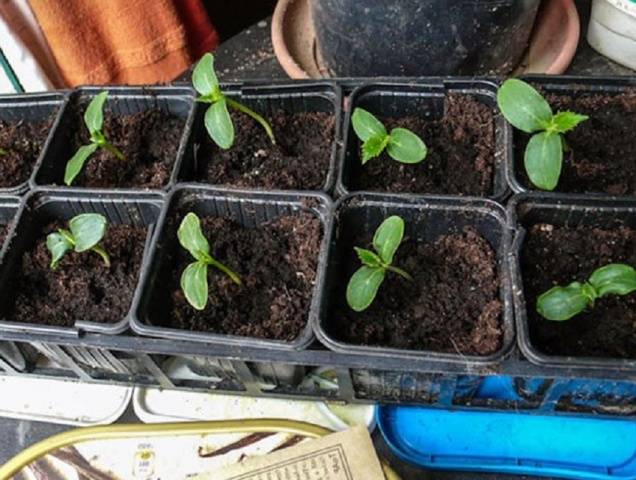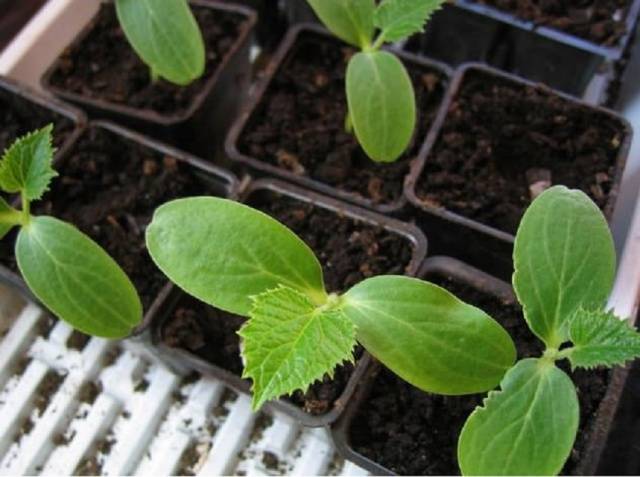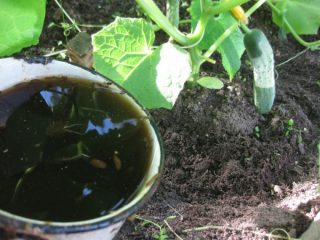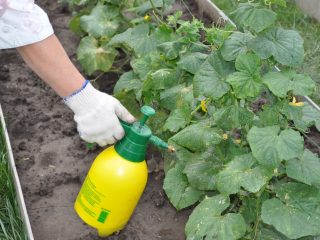Content
Among the new modern hybrids of cucumbers, a variety with a beautiful sonorous name – “Artist f1” – stands out.
The “Artist” cucumber was bred by breeders of the Dutch company Bejo (Bejo Zaden B.V.). The scientists' task was to create a hybrid that would produce an early harvest and would not require pollinators. Both parameters are fully manifested in the hybrid. The topic of our article is a description of the “Artist f1” cucumber, reviews about it and a photo of the plant.
Characteristics and description of the variety
For those who first decided to plant the “Artist” cucumber variety on their plot, it is very useful to familiarize themselves with its characteristics. The main parameters that interest vegetable growers:
- Fruit ripening period. The “Artist f1” cucumber is an ultra-early variety, so even the most impatient summer residents will be satisfied. Zelentsy are ready for harvest 35-40 days after planting.
- Type of plant. According to the description of the variety, “Artist” cucumbers are indeterminate or unlimited in growth. Therefore, they require tying and shaping the bush.
- Type of pollination. The hybrid is parthenocarpic, which indicates that the variety is self-pollinating. It can be successfully grown in film greenhouses, on the balcony and, of course, in open ground.
- Characteristics of the bush. The plant is vigorous with medium branching. Female type flowers. The leaves are dark green and large.
- Productivity. Subject to the requirements of agricultural technology from 1 sq.m of plantings of cucumbers of the “Artist” variety, up to 9 kg of tasty fruits are harvested.
- Fruit. Cucumber greens “Artist f1” have a unique characteristic feature. Their skin is covered with large, frequent pimples. The shape of the fruit is cylindrical, small in size (12 cm), weight about 100 g. The pulp is without bitterness, crisp and aromatic.
- The use of greens is universal. Cucumbers are equally good fresh or canned.
According to reviews from those who planted “Artist f1” cucumbers, the plant fully corresponds to the description.
Advantages and disadvantages
It is best to group the advantages and disadvantages of the Artist cucumber variety using reviews from farmers.
Among the advantages of the hybrid, they highlight:
- ultra-early ripening of cucumbers;
- duration of fruiting;
- excellent germination of planting material;
- lack of yellowness on ripe cucumbers;
- high productivity;
- resistance to common mosaic, cladosporiosis, powdery mildew;
- hybrid tolerance to lighting deficiency;
- high-quality presentation, allowing you to grow the “Artist” cucumber for commercial purposes;
- cucumber resistance to drought and heat;
- high restorative ability after drying;
- the versatility of using cucumbers.
“Artist” cucumbers are a very worthy variety in terms of their characteristics, but also have some disadvantages:
- Yield indicator. If agricultural practices are followed, 8.5 kg per 1 square meter is collected from the beds. m. Many vegetable growers believe that this is an average figure. Dutch hybrids are able to produce more fruit from the same area.
- Demanding cucumbers regarding the feeding schedule.
It is easier to consider such disadvantages as the distinctive characteristics of the “Artist” cucumber. A competent approach to agricultural cultivation technology can completely eliminate them.
Algorithm for growing seedlings
The technology for growing cucumber of the “Artist f1” variety is identical to the procedure for other hybrids. Cucumber seeds begin to be sown in February. The exact date is calculated taking into account the climate of the region, weather conditions, and recommendations of the lunar sowing calendar for the current year. The cucumber variety is grown in two ways:
- seedlings;
- direct sowing into the ground.
Grown in comfortable conditions, cucumber seedlings will allow you to harvest earlier and the plants will be stronger. In any case, you will need high-quality cucumber seeds.
According to the description and varietal characteristics, the “Artist” cucumber belongs to the first generation hybrids. Therefore, seeds will have to be purchased annually. It is best to buy Dutch “Artist” cucumber seeds. They have undergone complete pre-sowing treatment and are characterized by a high percentage of germination. If you decide to plant cucumber seeds from an unknown manufacturer, you can carry out full or partial pre-sowing preparation. For this:
- carry out the rejection of unsuitable - empty or damaged cucumber seeds;
- disinfect planting material in a solution of potassium permanganate for 15 minutes;
- hardened by changing temperatures;
- Soak cucumbers for germination.
To plant prepared cucumber seeds, you need to prepare soil and containers for seedlings. The most optimal composition for “Artist” cucumbers, according to reviews from summer residents, contains 2 parts of humus and peat and 1 part of sawdust. Additionally, vegetable growers add mineral fertilizers to 10 liters of the mixture - nitrophoska (30 g) and wood ash (40 g). The composition is mixed, calcined, spilled with a disinfecting solution and poured into containers for seedlings.
Plastic containers with a sliding bottom or individual cups are suitable for growing cucumbers.
Plants do not welcome replanting, so it is advisable to reduce the degree of injury to the roots during replanting. The container is disinfected with a solution of potassium permanganate and filled with soil, leaving 1 cm to the edge of the side.
Place 1-2 seeds in each container. If cucumber seeds have been sprouted, use tweezers so as not to break off the sprouts. Lightly sprinkle with soil, cover the crops with film and place the containers on a windowsill or other bright place.
Water the soil as the top layer dries, but moderately and with warm water.
As for the temperature indicators for cucumber seedlings, until shoots appear, you need to maintain a level of +23 ºC ... +28 ºC. After seed germination, the indicator is reduced to +20 ºC ... +22 ºC.
Main care points:
- Watering with settled warm water 1-2 times a week. When watering, make sure that water does not get on the cucumber leaves. If there are many heating devices in the room, additionally humidify the air.
- Thinning. When planting 2 or more seeds in one container, the most powerful sprout is left. The rest are cut with scissors so as not to harm the root system of the remaining seedling.
- Feeding. Before planting in open ground, 2-3 feedings of “Artist” cucumber seedlings are carried out. The first is needed in the phase of the appearance of the true leaf and consists of a set of mineral fertilizers - ammonium nitrate (7 g), potassium sulfate (8 g), superphosphate (15 g).
This amount is dissolved in a bucket of water and a little infusion of bird droppings is added. The second time the food for the cucumber is prepared in the phase of the second true leaf, the third time - 14 days after the first feeding. In both cases, take a double dose of the components for the same amount of water. - Highlighting. It is necessary in the first months of winter, when the “Artist” cucumber seedlings do not have enough daylight.
- Picking. They try not to pick pumpkin seedlings. But if sowing is carried out in a common box, then picking is carried out for plants aged 6-7 days and very carefully.
When the cucumber seedlings have 4 true leaves, they are ready to be planted in the ground.
Sowing in the ground
When sowing cucumbers in open ground, be sure to prepare the soil in advance. Dig up, apply mineral fertilizers, remove weeds. According to the description of the “Artist” cucumber variety, when sown in the ground, the first time it is necessary to cover it from possible frosts (see photo).
The earth at this time should warm up to +15 ºC, and the air temperature to +22 ºC. The depth of planting cucumber seeds is 2 cm and the distance between them is 10 cm.
Planting in the ground and care rules
The cucumber variety "Artist" is considered stress-resistant. Plants quickly adapt to a new location. Naturally, subject to careful replanting and soil preparation. Basic care consists of:
- Loosening and weeding of beds. At the same time, make sure not to touch the root system of the cucumbers, which is located close to the surface.
- Tying up a bush. According to reviews, “Artist f1” cucumbers branch a lot, so they are tied up, as in the photo.
This helps the branches not get tangled and ventilate, and the plant avoids fungal diseases. At the same time, pinch the side branches of the cucumbers at a height of 0.5 m, and the main stem at a height of 2 m. - Glaze. It is very important to maintain a watering schedule for cucumbers during fruit set and fruiting. Cucumbers are 80% water, and without sufficient watering the harvest will be poor quality. "Artist" can withstand short-term droughts, but cannot tolerate cold water.Water the bushes at the root with settled warm water.
- Feeding. This point must be followed carefully. For the “Artist” variety, nutrition is very important; up to 5 feedings will be needed during the growing season. The first is needed in the phase of appearance of true leaves. This is when sowing cucumber seeds directly into the ground. The composition is the same as when feeding seedlings. Then the compositions are alternated - mineral ones are replaced by organics. The cucumber variety responds well to feeding with infusions of bird droppings or mullein, and adding ash to the beds. According to reviews from summer residents, foliar feeding of “Artist” cucumbers with Terraflex, Plantafol, Isabion, and Megafol preparations has a good effect (see photo)
- Formation of a bush, especially in a greenhouse. Form the plant into one stem by pinching the top. This makes it possible to regulate growth and fruit formation on cucumber vines.
- Timely harvesting. An important point for culture. If you are late in harvesting the fruits, the cucumber yield will be significantly reduced.
Reviews
Photos of “Artist” cucumbers, descriptions of the variety and reviews from experienced summer residents provide great help to beginning farmers.
Useful video for vegetable growers:
















